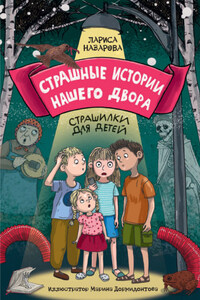Copyright © 2016 National Geographic Partners, LLC
All rights reserved. Reproduction of the whole or any part of the contents without written permission from the publisher is prohibited.
Since 1888, the National Geographic Society has funded more than 12,000 research, exploration, and preservation projects around the world. The Society receives funds from National Geographic Partners, LLC, funded in part by your purchase. A portion of the proceeds from this book supports this vital work. To learn more, visit www.natgeo.com/info.
NATIONAL GEOGRAPHIC and Yellow Border Design are trademarks of the National Geographic Society, used under license.
For more information, please visit www.nationalgeographic.com, call 1-800-647-5463, or write to the following address:
National Geographic Partners
1145 17th Street N.W.
Washington, D.C. 20036-4688 U.S.A.
Visit us online at www.nationalgeographic.com/books
For librarians and teachers: www.ngchildrensbooks.org
National Geographic supports K–12 educators with ELA Common Core Resources. Visit natgeoed.org/commoncore for more information.
More for kids from National Geographic: kids.nationalgeographic.com
For rights or permissions inquiries, please contact National Geographic Books Subsidiary Rights: ngbookrights@ngs.org
Trade paperback
ISBN: 978-1-4263-2563-2
Reinforced library edition
ISBN: 978-1-4263-2564-9
eBook ISBN: 978-1-4263-2569-4
Contributing writer: Moira Rose Donohue
Designer: Ruth Ann Thompson
Art director: Sanjida Rashid
v3.1
Version: 2017-07-10
FIRST LITTER OF PUPS
KAMOTS – “Freedom” (male)
LAKOTA – “Friend” (male, brother to Kamots)
MOTAKI – “Shadow” (female)
AIPUYI – “One Who Speaks a Lot” (female)
SECOND LITTER OF PUPS
AMANI – “Speaks the Truth” (male)
MOTOMO – “He Who Goes First” (male)
MATSI – “Sweet and Brave” (male)
THIRD LITTER OF PUPS
CHEMUKH – “Black” (female)
WAHOTS – “Likes to Howl” (male)
WYAKIN – “Spirit Guide” (female, sister to Wahots)
FOURTH LITTER THE SAWTOOTH PUPS All Brothers and Sisters
PIYIP – “Boy” (male)
AYET – “Girl” (female)
MOTAKI – “Shadow” (female)
These wolves join together for a group howl.
A wolf crouches low in a meadow to avoid being spotted.
I was 16 years old when I first looked into the golden eyes of a gray wolf. I was working as a cowboy on a ranch in Wyoming. I was rounding up a herd of horses just as the sun was coming up. Suddenly, the horses became jittery. They pawed the ground. I felt a prickle on the back of my neck. And that’s when I saw him. He was standing across the meadow, watching me.
Did You Know?
All dogs are descended from wolves. That means the giant Irish wolfhound and the tiny Chihuahua are related to wolves—and to each other!
I sat atop my horse, watching him. Slowly we circled each other. He seemed curious.
I was curious, too. We stared at each other for minutes. Then the wolf turned and trotted off.
My name is Jim Dutcher. I’ve always been interested in how animals live. That’s why I make films about wild animals. I’ve made movies about sea turtles, beavers, and cougars. After I finished the film about cougars, I needed a new idea. I decided to go back to that ranch in Wyoming.
I scrambled up a rocky mountain and looked around. Just like before, I felt like something, or someone, was watching me. I looked down to the rocky ledge (sounds like LEHJ) below me. Sure enough, a wolf was standing there. Like the wolf I had seen long ago, he stared at me. And I stared back. Then he disappeared.
This has to be a sign, I thought. My next movie should be about wolves.
Before I could start filming, I had to do my homework. I needed to learn about wolves. I read books and spoke to experts. I learned that the adult male gray wolf weighs between 70 and 130 pounds (32–59 kg). I was surprised to find out that wild wolves only live for about five years. But the most important thing I discovered is that wolves are social (sounds like SOH-shul) animals. They live in packs. Packs are a lot like human families. That gave me an idea. I would film the day-to-day life of a pack.

Wolves in fairy tales are mean and scary. In “Little Red Riding Hood,” the wolf eats Grandma. Then he tries to trick Little Red Riding Hood so he can eat her, too! Wolves are smart. But they rarely attack people. Bears and cougars are more dangerous to people, but even they rarely attack without cause. In the past 100 years, only two people were possibly killed by wolves in North America. And those stories about people turning into wolves? They’re just made up. There are no such things as werewolves!
But wolves usually hide from people. They like their privacy. And they like to roam. Wolves walk at a rate of about 5 miles an hour (8 km/h). But when they are chasing prey, they can run 35 miles an hour (56 km/h) or faster. They can cover a lot of distance in a day—sometimes 50 miles (80 km)! To make a good film about these shy animals, I’d need a special plan.








